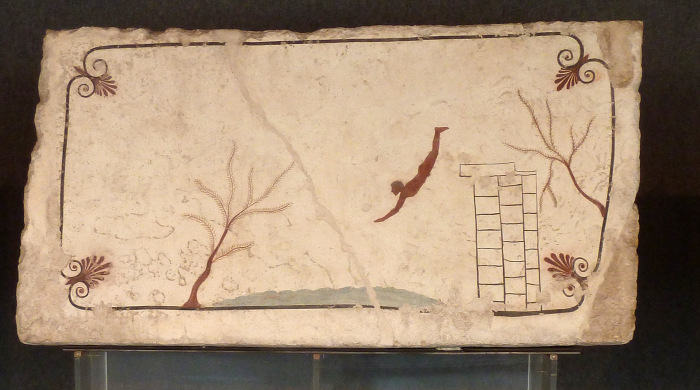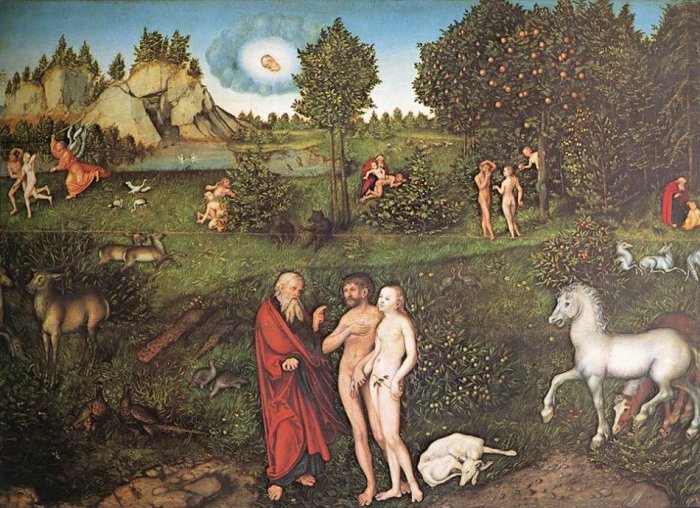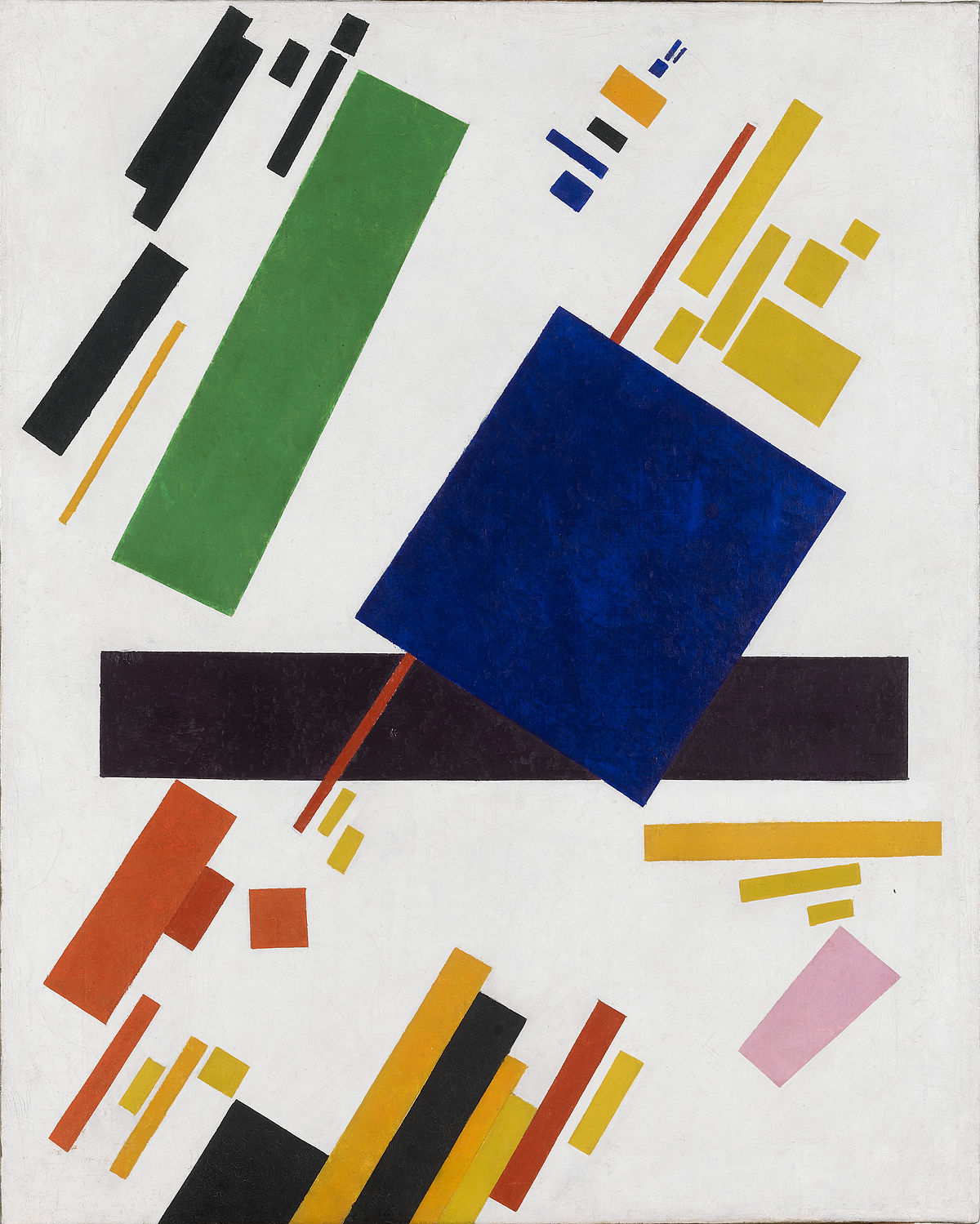As we have seen, narrative in its broadest sense is storytelling. More precisely, though, it involves the representation of an event or sequence of events that takes place in time. Thus, for something to qualify as a narrative – rather than, say, as a lecture or description – it must contain at least one event and give us some sense of the progression of time.
Try to memorise that more extended definition and then take the following short quiz to see if you have understood how it might apply in practice. By asking you to identify which painting, which short sentence and which longer passage of prose contains the basic elements of narrative, this multiple-choice quiz allows you to ensure you have a basic understanding of the difference between narrative and non-narrative.
(Once you have submitted your answers and completed the quiz, click on the View Questions button at the end to see fuller explanations for why some of the examples are narratives and some are not)
Quiz-summary
0 of 3 questions completed
Questions:
- 1
- 2
- 3
Information
You have already completed the quiz before. Hence you can not start it again.
Quiz is loading...
You must sign in or sign up to start the quiz.
You have to finish following quiz, to start this quiz:
Results
0 of 3 questions answered correctly
Your time:
Time has elapsed
You have reached 0 of 0 points, (0)
| Average score | |
| Your score |
Categories
- Not categorized 0%
- 1
- 2
- 3
- Answered
- Review
- Question 1 of 3
1. Question
1 pointsUsing our definition of narrative as the representation of an event or sequence of events that takes place in time, identify which of the three paintings below counts as a narrative (there is only one correct answer):
1. Tomb of the Diver, Unknown artist, 5th century B.C.

2. Paradise by Lucas Cranach the Elder, c.1530

3. Suprematist Composition by Kazimir Malevich, 1916
 Correct
Correct
Well done! The correct answer is indeed number 2: Lucas Cranach’s Paradise. This is because Cranach’s painting tells a story – the story of the sequence of events that befell Adam and Eve from their creation to their expulsion from the Garden of Eden. Depending on the order in which we look at the individual scenes in this painting, Cranach’s Paradise does not necessarily tell us this story in chronological order, but it does convey to us a sense of the passage of time – a sense of ‘before’ and ‘after.’ Thus, this painting fulfils both parts of our definition of narrative: it represents an event (or in this case a sequence of events) and it gives the impression that these events take place over time. Whether a work of art or a book tells its story in the order in which it happens, in reverse order or by jumping from one moment in time to another is irrelevant for determining whether it is a narrative or not. So long as a sense of time is involved in its telling of events, it is a narrative.
Painting number 1, from the so-called Tomb of the Diver in Paestum, Italy, occupies something of a grey area. It clearly represents an event – somebody diving – so it fulfils one of the two requirements of our definition of narrative. Some people might also claim that this painting conveys a sense of the passage of time too, since when we look at the scene before us we can imagine the moment just before the one that is actually depicted (when he dived) and anticipate the moment to come (when he hits the water). Nonetheless, this sense of time is something we ourselves project upon this painting; it is not something the painting itself generates (unlike Cranach’s painting). Indeed, many people could quite reasonably claim that in this painting time is frozen, moving neither forwards nor backwards. For this reason, this painting cannot be called a narrative in the fullest sense.
Painting number 3, Kazimir Malevich’s Suprematist Composition is very obviously not a narrative. Someone might say “I bet there’s a story behind this painting” and they could very well be right. But since the painting itself does not represent this event – or, indeed, any event – taking place, it cannot possibly be a narrative.
Incorrect
Wrong!
The correct answer is number 2: Lucas Cranach’s Paradise. This is because Cranach’s painting tells a story – the story of the sequence of events that befell Adam and Eve from their creation to their expulsion from the Garden of Eden. Depending on the order in which we look at the individual scenes in this painting, Cranach’s Paradise does not necessarily tell us this story in chronological order, but it does convey to us a sense of the passage of time – a sense of ‘before’ and ‘after.’ Thus, this painting fulfils both parts of our definition of narrative: it represents an event (or in this case a sequence of events) and it gives the impression that these events take place over time. Whether a work of art or a book tells its story in the order in which it happens, in reverse order or by jumping from one moment in time to another is irrelevant for determining whether it is a narrative or not. So long as a sense of time is involved in its telling of events, it is a narrative.
Painting number 1, from the so-called Tomb of the Diver in Paestum, Italy, occupies something of a grey area. It clearly represents an event – somebody diving – so it fulfils one of the two requirements of our definition of narrative. Some people might also claim that this painting conveys a sense of the passage of time too, since when we look at the scene before us we can imagine the moment just before the one that is actually depicted (when he dived) and anticipate the moment to come (when he hits the water). Nonetheless, this sense of time is something we ourselves project upon this painting; it is not something the painting itself generates (unlike Cranach’s painting). Indeed, many people could quite reasonably claim that in this painting time is frozen, moving neither forwards nor backwards. For this reason, this painting cannot be called a narrative in the fullest sense.
Painting number 3, Kazimir Malevich’s Suprematist Composition is very obviously not a narrative. Someone might say “I bet there’s a story behind this painting” and they could very well be right. But since the painting itself does not represent this event – or, indeed, any event – taking place, it cannot possibly be a narrative.
- Question 2 of 3
2. Question
1 pointsUsing our definition of narrative as the representation of an event or sequence of events that takes place in time, identify which of the following three sentences is a narrative (there is only one correct answer):
1. My cat is aggressive
2. My cat chased the neighbour’s dog all the way down the road
3. There is no way my cat would ever chase your dog all the way down the road!Correct
Well done!
The first of these sentences is a description rather than a narrative because nothing happens; it simply describes my cat.
The second sentence is a narrative because something does happen: it tells of an event (my cat chasing a dog) that takes place in time (the period of time during which the chase occurred, from one end of the road to the other).
The third sentence is more complicated than the other two. Taken as a whole, it is neither a description nor a narrative, but an assertion (a claim or argument). Note, however, that despite not being a narrative, this sentence still contains a narrative (the story – true or otherwise – of my cat chasing the neighbour’s dog down the road). Many works of literature are like this: they may not be examples of narrative literature overall, but this does not mean they cannot still contain passages of narrative within them. When they do contain such passages, those passages should still be treated as narratives and analysed using the strategies outlined in this module.
Incorrect
Wrong!
The first of these sentences is a description rather than a narrative because nothing happens; it simply describes my cat.
The second sentence is a narrative because something does happen: it tells of an event (my cat chasing a dog) that takes place in time (the period of time during which the chase occurred, from one end of the road to the other).
The third sentence is more complicated than the other two. Taken as a whole, it is neither a description nor a narrative, but an assertion (a claim or argument). Note, however, that despite not being a narrative, this sentence still contains a narrative (the story – true or otherwise – of my cat chasing the neighbour’s dog down the road). Many works of literature are like this: they may not be examples of narrative literature overall, but this does not mean they cannot still contain passages of narrative within them. When they do contain such passages, those passages should still be treated as narratives and analysed using the strategies outlined in this module.
- Question 3 of 3
3. Question
1 pointsUsing our definition of narrative as the representation of an event or sequence of events that takes place in time, try to identify which of the following three passages is a narrative (there is only one correct answer):
1. In the photograph, the station was a haven of beauty and tranquillity. Against a backdrop of misty mountains, candy floss clouds and an azure sky, the waves of the fjord were green, blue and white, in stark contrast to the rusty old steam engine in its siding.
2. 12.00 Ostersund
20.00 Stockholm
04.00 Oslo
06. 00 Volda
3. By the time the train pulled into Volda Central Station, Montmorency was exhausted. The journey had been a long one and as he dragged himself up onto his feet, stretched and shook himself, he felt as if he had been trodden on and kicked all night. Had it just been a dream, he asked himself, as the recollection of the sinister-looking man with the flashing red eyes playing cards in the restaurant car shot through him like a lightning bolt from the heavens. All had gone well until that fateful stop somewhere between Stockholm and Oslo …
Correct
Well done!
The first of these passages is a description, the second a schedule, the third a narrative.
This might at first glance seem obvious, but if we compare passage 3 (the narrative) with the other two passages, the picture becomes rather more interesting. For this comparison helps us see two important things about narrative: that it may involve more than the simple representation of an event or sequence of events that takes place in time that has been our basic working definition so far; and that just as a narrative may well include other forms of discourse (such as argumentation, information, description and so on) as a part of its narrative technique, so too may other forms of discourse include narrative elements in order to accomplish what they set out to achieve.
The first of these points should become clear if we compare passages 2 and 3 and assume that they both relate to the same train journey. Indeed, there are narratologists (experts in the study of narrative) who would claim that passage 2 has as much right to be considered a narrative as passage 3. This is because it too represents an event (a train journey) and it too conveys a sense of the passage of time (in as far as we can work out when the train is due to arrive at each stop and how long it takes to get from one stop to another). For most people, though, it feels wrong to call a schedule like this a narrative. Something seems to be missing from passage 2 that is present in passage 3 and that makes that second passage a narrative in a way that its predecessor is not. This ‘something’ is important: unlike passage 3, passage 2 does not tell a story; it merely conveys information.
Incorrect
Wrong!
The first of these passages is a description, the second a schedule, the third a narrative.
This might at first glance seem obvious, but if we compare passage 3 (the narrative) with the other two passages, the picture becomes rather more interesting. For this comparison helps us see two important things about narrative: that it may involve more than the simple representation of an event or sequence of events that takes place in time that has been our basic working definition so far; and that just as a narrative may well include other forms of discourse (such as argumentation, information, description and so on) as a part of its narrative technique, so too may other forms of discourse include narrative elements in order to accomplish what they set out to achieve.
The first of these points should become clear if we compare passages 2 and 3 and assume that they both relate to the same train journey. Indeed, there are narratologists (experts in the study of narrative) who would claim that passage 2 has as much right to be considered a narrative as passage 3. This is because it too represents an event (a train journey) and it too conveys a sense of the passage of time (in as far as we can work out when the train is due to arrive at each stop and how long it takes to get from one stop to another). For most people, though, it feels wrong to call a schedule like this a narrative. Something seems to be missing from passage 2 that is present in passage 3 and that makes that second passage a narrative in a way that its predecessor is not. This ‘something’ is important: unlike passage 3, passage 2 does not tell a story; it merely conveys information.
Completing that quiz should have added some extra layers of refinement and nuance to the understanding of narrative offered at the top of this page. If this is a topic that interests you and you would like to find out more about some of the further characteristics scholars have contended should be regarded as essential elements of narrative, take a look here for a brief overview.
The examples we have just looked at in any case highlight three important points about narrative we certainly should keep in mind as we continue our study:
- in the arts, narratives appear in different media (such as paintings, books and films) and different genres (such as plays, poems and prose)
- narratives often employ other, non-narrative forms of discourse (such as description, information and argumentation) as part of their narrative technique. At the same time, passages of narrative are in turn employed by other forms of discourse in order to help them achieve their specific goals of persuading, informing and/or appealing to the emotions of their readers, viewers and listeners
- to be considered a narrative, a work of art must do more than merely represent an event or sequence of events that takes place in time; they must do so in a manner that feels as if they are telling a story (if you wish to acquire a fuller sense of what this entails, this page illustrates the point with reference to the third of the questions contained in the quiz you have just completed)
That last point is especially crucial and explains why we will continue to define narrative as storytelling throughout this module.
